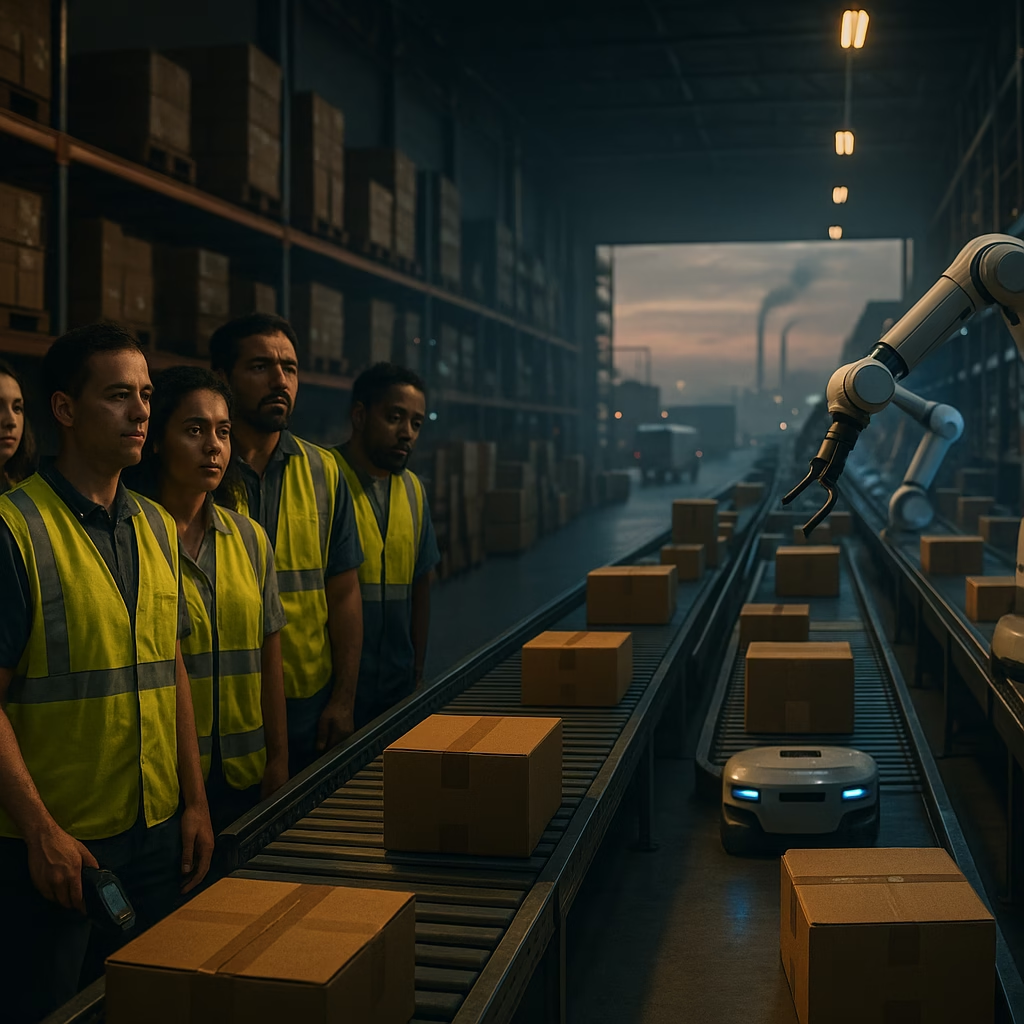Amazon Plans to Slash Workforce as AI Becomes More Prominent, CEO Says
Understanding Amazon’s Strategic Shift Toward Artificial Intelligence
In a striking move that signals a major turning point for the tech and retail industries, Amazon has announced plans to significantly reduce its workforce due to the increasing integration of artificial intelligence (AI) into its operations. According to a report published by MassLive in June 2025, Amazon’s CEO emphasized the growing prevalence of AI technologies across all sectors of the company, from logistics and warehousing to customer service and data analysis.
This announcement not only reaffirms the company’s commitment to technological innovation—but it also reignites the debate over the impact of AI on human employment.
Why Amazon is Making This Move
Amazon has long been a leader in automation and machine learning. With cutting-edge infrastructure and investment in AI, it’s no surprise that the company seeks to maximize its capabilities in this area. But now, the shift is going even further—moving from support roles to full-on workforce replacement in some departments.
Here are some reasons driving Amazon’s decision:
- Efficiency gains: AI technologies are capable of performing complex tasks at a fraction of the time and cost of human labor.
- Cost reduction: Cutting staff can result in significant expense savings across the board, especially in departments vulnerable to automation.
- Scalability: AI tools can operate 24/7 without breaks, allowing Amazon to scale operations without hiring new employees.
- Competitive edge: Early adoption of AI could position Amazon ahead of competitors relying more heavily on human labor.
CEO’s Statement: “A Difficult But Necessary Evolution”
Amazon CEO Andy Jassy acknowledged that the transition to a more AI-reliant organization would be painful for many. In his public statement, he emphasized that the layoffs, while regrettable, are essential to remaining competitive in a rapidly evolving digital economy.
“This is not just about robots in warehouses,” said Jassy. “It’s about deploying AI across every layer of operations—customer service, inventory management, marketing analytics, and even in areas like software development and logistics planning.”
What Departments Will Be Affected by the Job Cuts?
While the company has not yet released a detailed breakdown of which positions will be eliminated, sources close to the matter suggest that thousands of roles could be impacted over the next 12 to 24 months. The most vulnerable areas include:
- Customer Support: Human agents are being replaced with AI-powered voice assistants and chatbots trained on Amazon’s vast customer interaction data.
- Warehousing & Fulfillment: Advanced robotics and machine vision systems now handle sorting, packing, and quality control with minimal human input.
- Supply Chain and Inventory Management: AI algorithms forecast demand and optimize routes better than manual operations ever could.
- Administrative Functions: From HR analytics to financial auditing, many back-office duties will shift to algorithmic control.
The Role of Investment in Generative AI
Amazon has doubled down on its AI advancement by investing heavily in generative AI platforms similar to OpenAI’s ChatGPT. This includes the further development of Amazon Bedrock and AWS AI services, which businesses use to build their own intelligent applications.
Generative AI offers several advantages, including:
- Natural language capabilities: Making customer service bots more human-like and efficient.
- Automated content generation: For product listings, marketing emails, and internal documentation.
- Predictive modeling: Enabling more accurate forecasting in logistics, sales, and pricing strategies.
Implications for the Tech Industry and Global Workforce
Amazon’s job cut announcement sends shockwaves far beyond its own ecosystem. As one of the world’s largest employers—especially in low-skill, front-line roles—Amazon’s strategy may set a template that many other companies follow.
Potential ripple effects include:
- Wider tech industry adoption: Firms across retail, logistics, finance, and healthcare may accelerate their AI-driven transformations.
- Global employment uncertainty: Millions of similar jobs at risk if automation trends continue unchecked.
- Economic inequality: The divide between AI-competent professionals and traditional workers may grow larger than ever before.
What This Means for Amazon Employees
For current employees, the future appears uncertain. Many of the roles targeted for automation represent long-term careers or steady employment for thousands of American and international workers. In response, Amazon said it would be offering the following support measures:
- Severance packages: For those affected, including extended health benefits and resume support.
- Retraining programs: Internal reskilling opportunities for high-demand areas like cloud computing, AI ethics, and data science.
- Job transition services: Including partnerships with staffing agencies and other tech firms.
However, critics argue these measures may fall short, especially for individuals without the technical background to transition into AI-centric roles.
How Amazon Consumers Will Be Affected
While employees bear the brunt of this transformation, customers could experience more seamless, personalized interactions thanks to AI enhancements. From smarter Alexa recommendations to faster delivery times and tailored shopping experiences, consumers may unknowingly benefit from this operational shift.
Key customer-focused technologies include:
- Voice commerce: Enhanced AI assistants able to manage complex shopping transactions entirely through voice commands.
- Hyper-personalization: Tailored marketing and product suggestions driven by machine learning algorithms.
- Automated delivery logistics: Faster shipping through AI-optimized supply chains.
Looking Ahead: Is AI a Threat or an Opportunity?
There are two ways to interpret Amazon’s recent move. On one hand, it’s a harbinger of unprecedented technological progress. On the other, a stark reminder that economic revolutions often come with human costs.
Experts suggest the key to navigating the future lies in:
- Public-private partnerships focused on workforce adaptation and equal access to tech training.
- Balanced regulation to ensure responsible AI deployment without stifling innovation.
- Proactive employee reskilling by companies anticipating job displacement through automation.
Conclusion: Amazon’s AI Leap Marks the Beginning of a New Workforce Era
As Amazon reshapes its operations around artificial intelligence, it signals a definitive shift in how companies around the world may approach employment moving forward. While the promises of AI are vast—from efficiency to profitability—the social and economic consequences are just beginning to unfold.
Whether the future of work will be inclusive and empowering or cold and mechanized largely depends on the decisions made today by corporate leaders, lawmakers, and individuals alike.
The question we must now ask is no longer if AI will change work—but how we will adapt to the reality it creates.< lang="en">







Leave a Reply